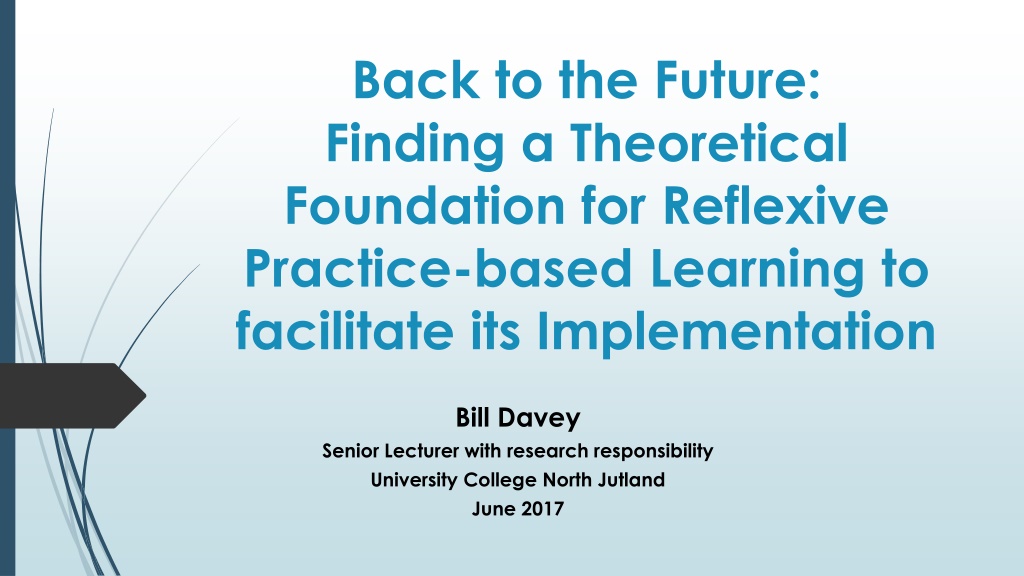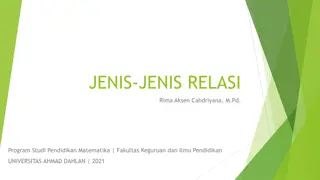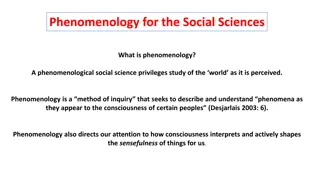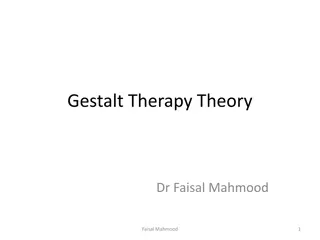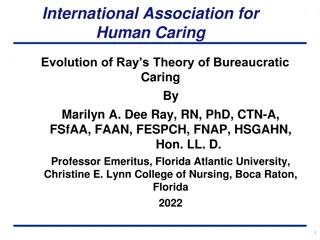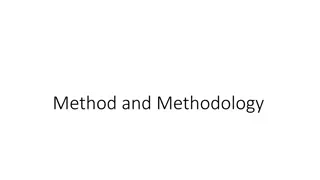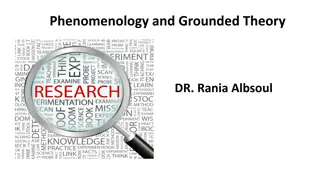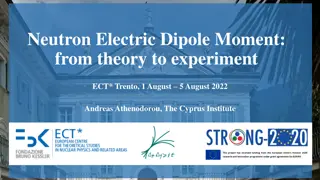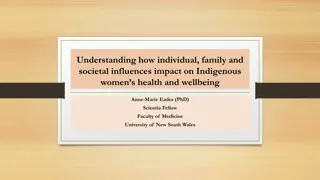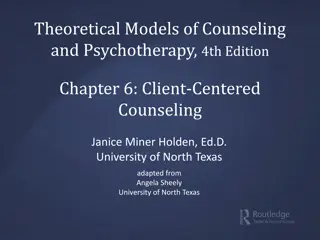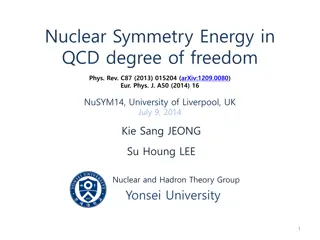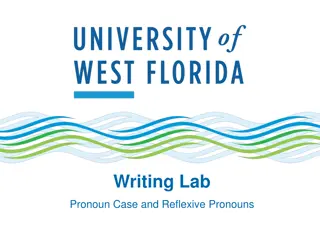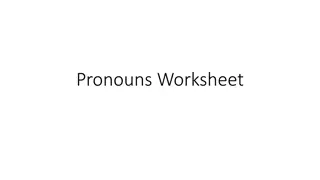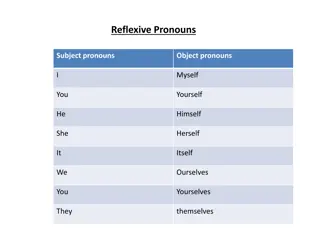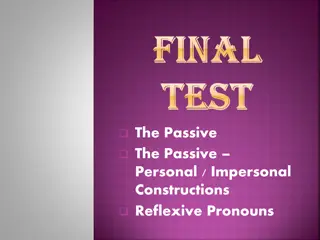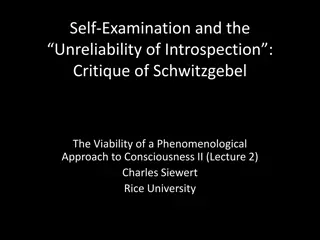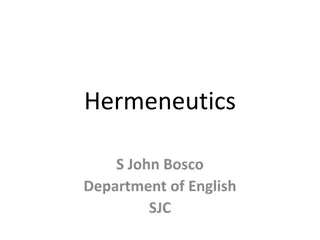Exploring Phenomenology for Reflexive Practice-Based Learning
This paper delves into the integration of phenomenology into educational practices to enhance reflective teaching and learning. It highlights the importance of reflective practice in tailoring learning processes for students and teachers, advocating for a systematic and disciplined approach that continuously enhances skills. Phenomenology's emphasis on the primacy of the thing itself, subjective experience, and the life world provides a valuable framework for understanding reality in educational contexts.
Download Presentation

Please find below an Image/Link to download the presentation.
The content on the website is provided AS IS for your information and personal use only. It may not be sold, licensed, or shared on other websites without obtaining consent from the author. Download presentation by click this link. If you encounter any issues during the download, it is possible that the publisher has removed the file from their server.
E N D
Presentation Transcript
Back to the Future: Finding a Theoretical Foundation for Reflexive Practice-based Learning to facilitate its Implementation Bill Davey Senior Lecturer with research responsibility University College North Jutland June 2017
Why is there a need for Reflective Practise-based Learning ? RPL finds its origins in PBL (Problem Based Learning) In PBL the student identifies a problem in a specific disciplinary area and, using the relevant theory and analytic tools, attempts to solve the problem . However, the process is stuccato and not necessarily iterative. RPL extends this process to incorporate the notion of reflection As a learning strategy for all, here including teachers To advance the students tailoring of the learning process to their own learning style And provide a springboard for further investigation and learning
Aim of this paper describe phenomenology as a theory for approaching the truth of the thing to be learned through a description of both students and educators natural attitude. show how phenomenology, understood as a reflexive approach to teaching and learning, can be integrated into educational practices. propose a model to facilitate and enhance process of reflection for teachers and students alike. Finally, we contend that a phenomenological attitude is not only applicable to all disciplines, but provides systematic analytic practices that are disciplined and scientifically defensible, which in turn will continuously enhance practitioners skills throughout their professional lives.
Phenomenology maintains three basic tenets: firstly, the primacy of the thing itself, secondly, on the significance of the life world and lastly, on the importance of subjective experience primacy of the thing in understanding reality. These three lynchpins find their common overlap in the notion of quintessential dimension. the importance of subjective experience in understanding reality the significance of the life world
The Process of Reflection in theory The starting point is A, because reflection does not necessarily take place at the end of a lesson, module, or course. point B. The educator or student experiences a watershed moment as he or she mulls over phenomena of teaching/learning events in the light of previous experience and planned learning outcomes at point C by making the natural attitude the object of reflection, the educator or student moves upwards and to reflect on their engagement, impact, and influence on the teaching/learning context.
The Process of Reflection in theory at point C. Thus, the educator or student returns to A but this time the impressions are no longer mirages, but identifiable phenomena with defining characteristics. The educator or student has come closer to understanding the essence of a phenomenon, (D) of different ways in which the salient characteristics of the phenomena appear. At point E analysis is undertaken and one returns to A with more questions, re- entering the reflective process.
Phenomenology and Reflective Practice-based Learning RPL as Perceived as micro RPL as Conceived as macro Reflection is a series of ephemeral events embedded in a process of actions 1) RPL facilitates the sharing of students and educators natural attitudes to the phenomena encountered Reflection in plenum talking an innovation into being as emergent reflection talking a parameter into the activity 2) the lemniscate makes the process of sharing accessible and collaborative 3) RPL promotes constructive flexible professionalism in all life-long learners. Reflection as egocentric play 4) RPL provides a platform for reflection in collaboration. Reflections as invokation of exercise parameters pre-requisite positioning on a issue 5) The necessity for achieving intersubjectivity promotes the tailoring of teaching and learning, mapping each activity onto the other. The consequent reflexive relationship between teaching, learning and the building of professional knowledge makes the educational process collaborative, inclusive and plastic.
Areas for reflection and research More empirical data Identify, analyse and explicate the Micro and Macro processes Incremental stages ? Russsian doll ? Mutually constituative ? Or separate processes? Design a model on empirical data which can accommodate macro and micro learning processes simultaneously
The rules We need to build a town All of the blocks needs to be used All of the blocks needs to be put back in the same pack A3 paper + pen (we used 2 A3 papers)
The idea phase We didn t have time to do a brainstorm, so we Just took it as It came NO Planning or Management
The beginning We started to take pictures of the bags so it was easy to put it all back. This was a really good idea
Reflections We build along the way We didn t take on any specific roles, everybody had a saying in the design of the town The group had a good flow from the beginning
Reflections on the exercise The pictures really paid off, we saved a lot of time when we had to do the last criteria
